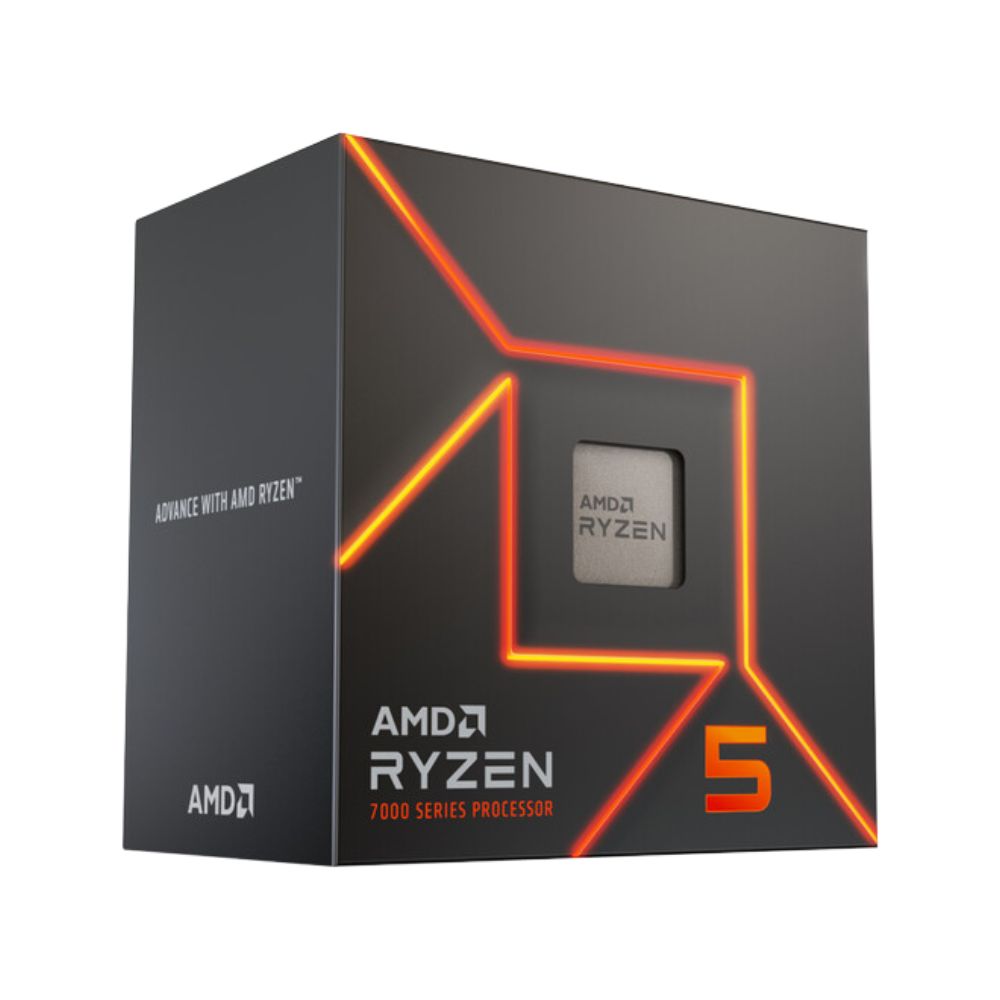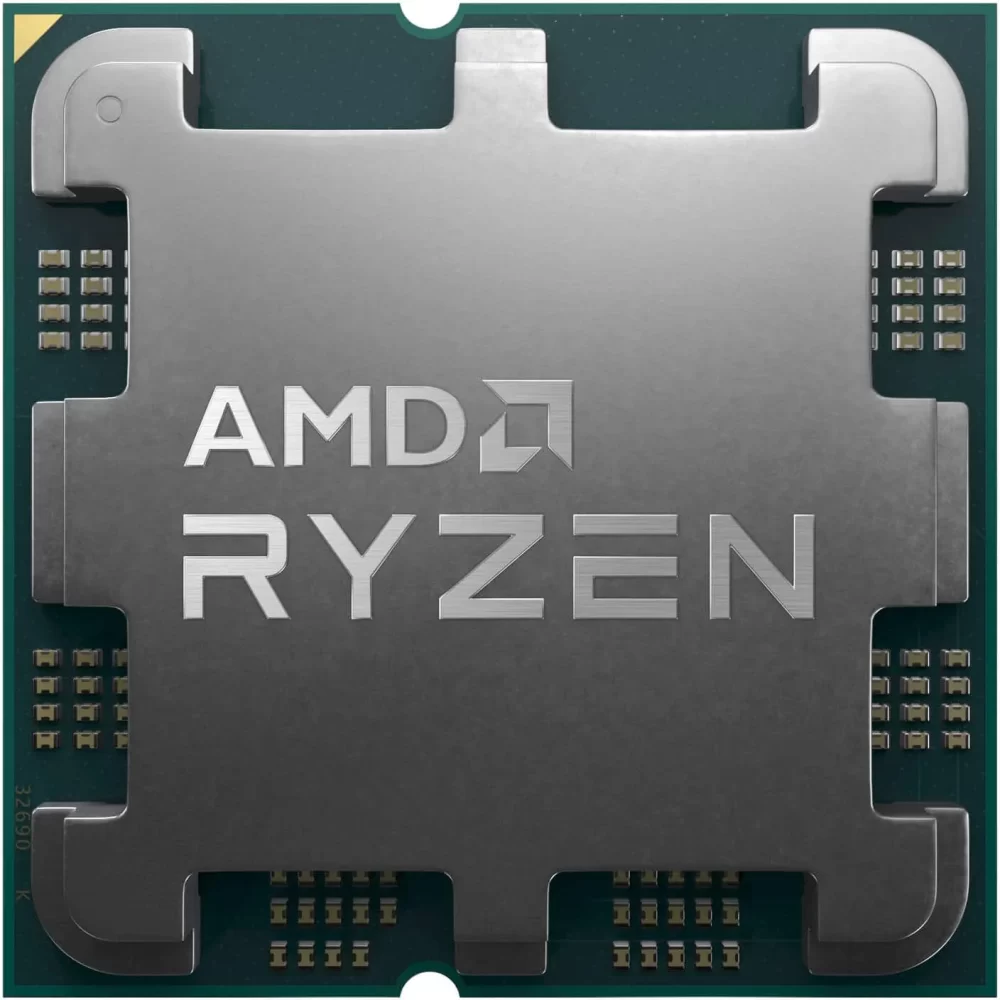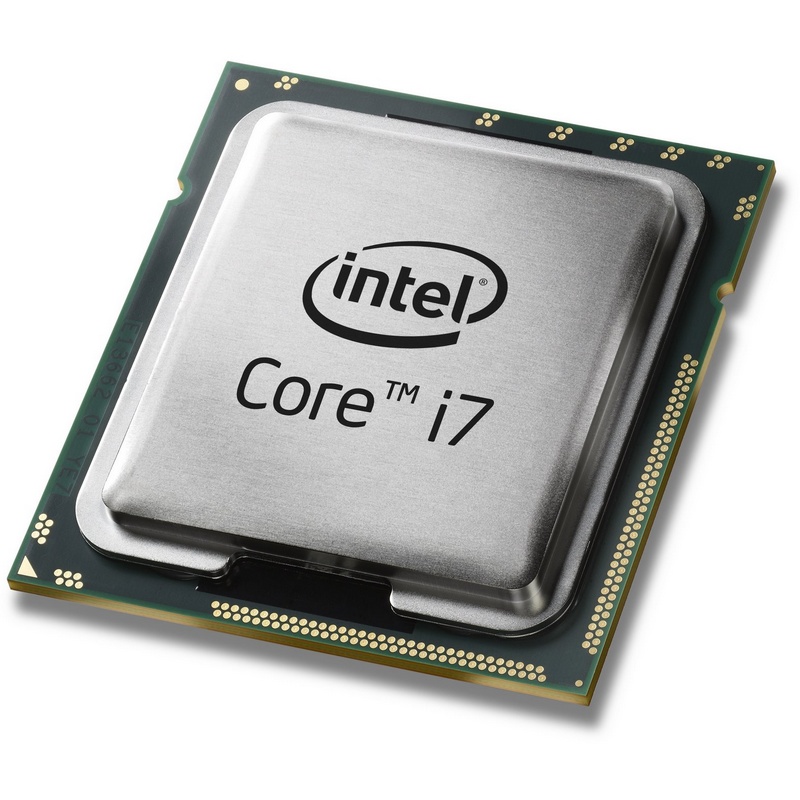History and Evolution of the Intel vs AMD CPU
The tussle between Intel vs AMD CPU is a saga with deep roots. For decades, these titans have vied for dominance in the CPU arena. Each brand has been pivotal in shaping the computing world. Intel was once the unchallenged leader until AMD’s Ryzen series disrupted the market in 2017. This rivalry fueled rapid advancements, bringing today’s CPUs to astonishing heights of performance.
Intel held a tight grip on high-performance benchmarks for years. However, AMD’s introduction of cutting-edge Ryzen processors changed the game. AMD’s ingenuity placed them back in contention for the performance crown. The result? Users now have access to more powerful chips with greater efficiency and competitive pricing.
The persistent rivalry ensures a dynamic market. It compels both companies to innovate constantly. Strides in technology from both camps translate to beefier specs and better CPUs. This competition doesn’t just push the envelope; it redefines it, time and time again. As Intel and AMD leapfrog each other with each release, consumers stand to gain the most. The future of CPUs looks brighter than ever, thanks to this ongoing battle of wits and technology.
Desktop CPUs: Comparing Price and Value
When you’re building or upgrading a computer, the CPU is a critical component that influences performance and cost. Navigating the choices between Intel vs AMD CPU means examining price and value, which can be a complex task given the frequent product releases and competitive pricing strategies of both companies.
In terms of pricing, AMD has historically been the champion of budget-friendly options, offering powerful processors at price points that often undercut Intel’s offerings. This trend is exemplified by the affordability and competitiveness of AMD’s Ryzen 5 and Ryzen 7 series, which offer a strong balance of performance and cost for mid-range systems.
Intel, on the other hand, retains a reputation for high-end performance, especially with its Core i7 and i9 series. The premium you pay for Intel often comes with advantages in single-core performance and compatibility with high-speed memory, which can be beneficial for certain applications and gaming scenarios.
However, value is not just about the price tag. It’s about what you get for your money. AMD CPUs, for example, often come with more cores at a lower cost, which is an attractive offer for users who engage in multitasking or use applications that leverage multi-core processing.
Meanwhile, Intel’s CPUs tend to boast higher clock speeds and better overclocking potential. For users looking to squeeze the most performance out of each core, particularly gamers who prioritize frame rates in single-threaded applications, Intel CPUs might present the better value.
Ultimately, when comparing desktop CPUs from Intel and AMD in terms of price and value, consider your specific needs. Gamers and users demanding high single-thread performance may gravitate toward Intel, while multitaskers and budget-conscious buyers may find AMD’s offerings more appealing.

Performance Showdown: Which Offers the Fastest Processors?
When it comes to raw speed, the Intel vs AMD CPU battle is intense. Both brands push the limits of CPU performance, vying for the title of ‘fastest processor.’ Intel’s high-end options, like the Core i9 series, have traditionally led in single-core speed crucial for gaming. AMD counters with their Ryzen chips, packing more cores, which shine in multitasking and complex tasks.
Recent generations have seen AMD close the gap in single-core performance, while Intel answers by boosting multi-core capabilities. This tit-for-tat race means choosing the ‘fastest’ can depend on your workload. Gamers may lean towards Intel’s swift single-core performance. Users running multiple apps or doing video editing might prefer AMD’s multi-threaded strength.
Intel’s Raptor Lake and AMD’s Ryzen 7000 series are now head-to-head. Intel boasts up to 24 cores in its i9-14900K, while AMD’s Ryzen 9 7950X offers 16 powerful cores. Each caters to specific needs, from heavy multi-threaded tasks to high-frame-rate gaming. Thus, the ‘fastest’ is not universal—it’s about what your specific applications demand.
Benchmark results can guide you, showing each CPU’s speed in different scenarios. Remember, though, real-world use can differ. Bottlenecks in other areas of your system can impact perceived speed. Always consider how the processor will work with other components in your rig.
Whichever brand you choose, know that both Intel vs AMD CPU provide processors capable of impressive speed. Your decision should align with your computing needs, balancing performance with budget considerations.
High-End Desktop Processors: The Fight for Superiority
In the arena of high-end desktop processors, AMD and Intel lock horns with their mightiest offerings. At the pinnacle are CPUs like Intel’s Core i9 and AMD’s Ryzen 9 series, embodying the zenith of current technology. These heavyweight champions carry the mantle for their respective brands, showcasing unparalleled prowess in handling the most demanding tasks.
On one side, Intel’s Core i9 processors boast astronomic clock speeds that cater to high-performance sectors. They excel in workloads that depend on quick, efficient core operation. For the power user, the i9 series is a symbol of premium capability, delivering blistering speeds that are perfect for extreme gaming and intensive single-threaded applications.
Flanking the other side, AMD’s Ryzen 9 chips stand tall with abundant cores and threads under their belt. They are tailored for environments where multitasking is king, from video editing to 3D rendering. AMD’s approach prioritizes versatility and parallel processing, challenging Intel’s dominion with sheer multi-threaded force.
The buyer confronted with choosing between Intel and AMD’s flagship processors must weigh their specific needs. If raw speed for gaming and turbo-charged single-thread tasks is paramount, Intel might edge ahead. Conversely, if seamless multi-tasking and handling of complex, multi-threaded operations are the order of the day, AMD’s Ryzen may claim the throne. Each consumer’s unique demands call for a tailored choice, ensuring the battle for superiority rages on with no clear victor in sight.
Laptop Processor Landscape: Efficiency Meets Power
In the competitive space of laptop processors, efficiency and power go hand in hand. Both AMD and Intel have staked their claims with processors tailored for portability without sacrificing performance. Intel’s latest offerings include the Meteor Lake mobile processors, which debuted with modest enthusiasm but promise improved energy efficiency. Contrarily, AMD’s Ryzen 7000 series has garnered attention for its notable speed increments, albeit without increasing core counts.
The fray between Intel vs AMD CPU gets intriguing with the refreshes like Intel’s Raptor Lake and AMD’s Ryzen 7000 CPUs, stirring the pot with significant improvements. AMD chips typically champion battery life due to their efficiency, while Intel continues to optimize performance, often leading in raw processing speed. Interestingly, future laptop processor generations are anticipated to bolster the dynamics further. AMD’s Ryzen AI 300 processors are slated for a mid-year release, matching Intel’s Lunar Lake CPUs expected within the ensuing months; both slated to support Copilot+ PCs, hinting at substantial advancements.
For those weighing options, AMD’s Ryzen mobile CPUs surface as formidable contenders. The Ryzen 6000 and 7000 series have proved their mettle, particularly in balancing energy consumption with robust execution. Intel’s Raptor Lake mobile CPUs don’t lag far behind, cultivating a reputation for high-wattage, power-packed performance, thus making the choice a matter of individual usage and battery life preferences. Whether for gaming, business, or casual use, the decision between AMD and Intel will hinge on specific demands and desired features.

Mid-Range to Budget CPUs: What’s the Best Pick for Your Needs?
If you’re targeting a mid-range or budget CPU, your best pick hinges on your specific usage and price sensitivity. For mid-range contenders, Intel’s Core i5 chips offer commendable gaming prowess, while AMD’s Ryzen 5 series excels in multitasking efficiency, often at lower price points. Budget CPUs complicate the choice further. Intel’s Core i3 family serves basic computing needs at attractive prices, but AMD’s lower-end Ryzen offerings bundle more cores, which could swing the value argument in their favor for multi-threaded performance on a tight budget.
Choosing between mid-range and budget CPUs from Intel and AMD involves balancing cost against performance goals. Users favoring gaming may lean towards Intel’s i5 for its strong single-core output. For those juggling various tasks or seeking a cheaper entry into multi-core processing, AMD’s Ryzen 5 or even the Ryzen 3 present worthy alternatives. In the budget realm, Intel’s Core i3s are usually friendlier priced, while AMD’s equivalent APUs offer integrated graphics, adding to their appeal in entry-level gaming or systems without discrete GPUs.
When deciding on the best CPU for your needs, consider future usability too. AMD’s AM4 platform has a history of supporting multiple generations, giving some flexibility for later upgrades. Intel’s changing sockets may require more investment down the line. Weigh these aspects alongside performance benchmarks to ensure your chosen CPU aligns with both current demands and potential future needs.
The Future of Gaming CPUs: AMD’s 3D V-Cache vs Intel’s Core Series
Gaming performance is a battlefield fiercely contested by AMD and Intel. AMD’s pioneering 3D V-Cache technology propels its Ryzen chips to the top, offering gamers exceptional frame rates and faster load times. This tech exemplifies AMD’s focus on enhancing gaming experiences through architectural innovation.
Intel, not to be outdone, wields its Core series as a counter. These CPUs excel in single-core tasks, crucial for many games. Intel’s processors also shine in overclocking, pushing performance boundaries for enthusiasts. The company’s Raptor Lake series is a testament to this, embracing a hybrid architecture that caters to both gaming and heavy workloads.
Looking ahead, AMD is refining its 3D V-Cache lineup, aiming to boost gaming performance further without sacrificing productivity. Intel, meanwhile, is investing in advancements for its Core series, optimizing for even higher speeds and gaming excellence.
The competition is sharp. AMD focuses on raw gaming muscle with 3D V-Cache, while Intel hones the versatility and peak performance of its Core CPUs. Gamers thus find themselves spoilt for choice, with each new release promising unprecedented gaming prowess. The ultimate decision hinges on one’s gaming and computing priorities, shaped by this relentless innovation race.

HEDT (High-End Desktop Processors): Professional Grade Power
When your projects demand the utmost power, HEDT CPUs from AMD and Intel become crucial. These high-end desktop processors are designed for professionals who need top-tier performance in tasks like 3D rendering, complex simulations, and intensive video editing. With a focus on multi-core efficiency, they pack a punch for compute-heavy workloads.
Intel’s offerings, such as the X-series, have catered to power users with their solid performance cores and robust memory capabilities. They empower CPU-intensive applications to run smoothly, ensuring that professionals maintain productivity under hefty workloads. On the flip side, AMD’s Threadripper series, with its generous core counts and expansive PCIe lane support, has appealed to creators needing extensive multi-threading and expansive I/O options.
In this high-caliber segment, AMD often leads with core and thread counts, making Threadripper a favorite for tasks that scale well with parallel processing. Conversely, Intel’s top-end HEDT CPUs typically shine in applications that benefit from high clock speeds and efficient single-threaded performance.
Choosing between the two brands for HEDT requirements involves considering your specific professional needs and the types of applications you most frequently use. Whether it’s AMD’s brute force in multi-threading or Intel’s efficiency in high-frequency tasks, both deliver the outstanding power for advanced computing demands.
Considerations for Laptop Buyers: Intel vs AMD CPU
In the quest for the perfect laptop CPU, the imminent launch of AMD’s Ryzen AI 300 and Intel’s Lunar Lake processors invites a fresh round of considerations. These upcoming generations signal a significant shift, promising enhanced features and improved performance for laptop users. Here are key factors prospective buyers should bear in mind:
- Performance Expectations: Both AMD and Intel are poised to unveil CPUs with improved computing capabilities. The Ryzen AI 300 series is likely to continue AMD’s focus on efficiency and multitasking, whereas Intel’s Lunar Lake may offer advancements in processing speed and integrated graphics, catering to diverse performance needs.
- Battery Efficiency: One of the critical concerns for laptop users is battery life. AMD’s previous Ryzen mobile processors have shown commendable energy efficiency, suggesting that the Ryzen AI 300 series could follow suit. Meanwhile, Intel’s Lunar Lake CPUs will likely integrate power-saving technologies, aiming to strike a balance between consumption and performance.
- Integrated Graphics: With an increased emphasis on integrated graphics, Intel’s Lunar Lake might deliver more robust in-built GPU performance. This could be an essential consideration for users interested in light gaming or graphic-intensive tasks without an external GPU.
- Technological Advancements: The new CPU generations are set to support advanced features such as AI acceleration and enhanced connectivity. Thus, opting for a laptop with Ryzen AI 300 or Lunar Lake CPUs could future-proof the investment and provide access to cutting-edge technology.
- Release Timing and Price: Monitor the official launch dates and pricing for these CPUs. Early adopters might face premium pricing, but waiting a few months post-release can often result in better deals thanks to market stabilization.
When choosing your next laptop, a balance between immediate needs and foresight is crucial. The AMD or Intel badge is just the starting point; digging deeper into specific CPU models and their features will ensure that your selection aligns precisely with both your present demands and potential future requirements. Keep a watchful eye on user reviews and benchmarks post-release to make the most informed decision.

Final Buying Advice: Choosing the Right CPU for Your Needs
When it’s time to pick a CPU, start with your needs. Are you gaming, editing video, or just browsing? For gamers, consider Intel’s high clock speeds or AMD’s 3D V-Cache lineup. Multi-thread tasks like video editing shine on AMD’s Ryzen series with more cores. Tight budgets benefit from AMD’s affordable options, yet Intel’s i3 range shouldn’t be overlooked for basic tasks.
Check compatibility with your system too. AMD’s chips might mean a new motherboard if you’re upgrading. Intel’s might too, depending on the generation leap. Factor in the CPU’s future relevance and your propensity for upgrades.
Lastly, read up-to-date benchmarks. They’ll show how CPUs handle real-world tasks. Weigh their findings against your computing habits and you’ll find the best CPU for your unique situation.
In the realm of CPUs, aftersales support is as vital as performance. When picking between AMD and Intel, it’s key to look beyond sheer power. Manufacturers’ warranty policies can sway your choice. AMD and Intel offer different guarantees, catering to various buyer needs. These policies assure you help if issues arise after your purchase.
Most Intel CPUs come with a standard three-year warranty. This cover provides relief if your processor fails under normal usage. AMD typically matches this with a similar three-year promise. Both companies’ commitment eases concerns of defects or early failure. Make sure to check the specific terms and conditions. Some warranties might not cover overclocking-related damages.
Extended warranties can be a smart investment for peace of mind. Intel recently made a move with warranties on select chips. They are extending guarantees by two extra years, totaling five years of support. This change offers a strong argument for choosing Intel, especially amid recent stability challenges.
Always keep documentation and original packaging. They might be required for claims or reselling. For tech enthusiasts, consider warranty transfers. If you plan to sell your CPU later, a transferable warranty can increase its resale value.
In summary, whether you tilt towards AMD or Intel, warranty support is a crucial consideration. These guarantees are safety nets for your investment. They ensure that your experience with your chosen CPU brand remains positive, even in the face of unexpected hardware failures.





